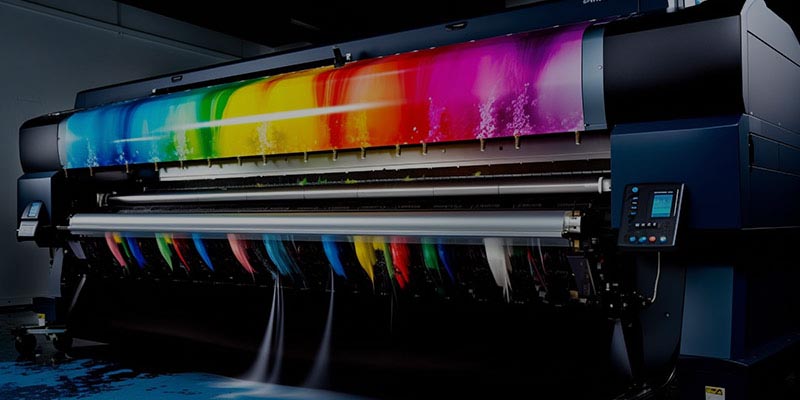Sustainability has become a top priority for industries worldwide, including the textile and printing sectors. As consumer awareness and environmental concerns grow, businesses are increasingly seeking sustainable alternatives to traditional printing methods. In this blog, we will explore the significant strides being made towards sustainability in the reactive digital printing industry and how this innovative technology is transforming the textile sector.
Water Conservation:
Water scarcity is a pressing global issue, and the textile industry is known for its significant water consumption. Reactive digital printing offers a sustainable solution by minimizing water usage. Unlike traditional printing methods that require extensive washing and rinsing, digital printing with reactive inks requires minimal water for cleaning and maintenance. This water conservation aspect not only reduces environmental impact but also helps textile manufacturers achieve their sustainability goals.
Eco-Friendly Ink Formulations:
Reactive digital printing utilizes eco-friendly ink formulations that are water-based and free from harmful chemicals, such as heavy metals. These inks comply with stringent environmental standards, ensuring the safety of both textile workers and end consumers. By eliminating hazardous substances, reactive digital printing significantly reduces the ecological footprint associated with printing and contributes to a healthier and greener environment.
Reduced Energy Consumption:
Energy efficiency is a crucial aspect of sustainable production. Reactive digital printing minimizes energy consumption compared to traditional printing methods. Digital printers utilize advanced technologies that require less energy for operations. Additionally, digital printing eliminates the need for color separation, screen preparation, and other energy-intensive processes associated with conventional printing. This reduction in energy consumption not only lowers carbon emissions but also helps businesses reduce operational costs.
Waste Reduction:
Waste reduction is a key component of sustainable practices. Reactive digital printing offers superior waste reduction compared to traditional printing methods. With digital printing, precise ink deposition ensures minimal ink wastage, as the ink is only applied where it is needed. Additionally, digital printing enables on-demand production, eliminating the need for large-scale production runs and reducing excess inventory. The result is a significant reduction in textile waste, contributing to a circular economy approach.
Customization and Personalization:
Reactive digital printing provides endless opportunities for customization and personalization. By offering the ability to print small quantities and individualized designs, digital printing minimizes the production of unsold and outdated stock. This aspect promotes sustainability by reducing waste and the environmental impact associated with mass production. Moreover, customization allows consumers to connect with products on a deeper level, fostering a more sustainable and conscious consumer culture.
Compliance with Environmental Standards:
Reactive digital printing aligns with global sustainability initiatives and complies with stringent environmental standards. The textile industry faces increasing scrutiny regarding its impact on ecosystems and communities. Reactive digital printing offers a sustainable alternative that helps businesses meet regulatory requirements and demonstrate their commitment to responsible and ethical practices. Compliance with environmental standards not only enhances a company’s reputation but also fosters long-term growth and customer trust.
Sustainability is no longer an option but a necessity for businesses in the textile industry. Reactive digital printing has emerged as a game-changer, providing sustainable solutions for fabric printing. Through water conservation, eco-friendly ink formulations, reduced energy consumption, waste reduction, customization, and compliance with environmental standards, reactive digital printing is revolutionizing the industry’s approach to sustainability. As businesses increasingly adopt this innovative technology, they not only reduce their environmental impact but also gain a competitive edge by catering to the growing consumer demand for eco-conscious products. The future of reactive digital printing lies in its ability to continue pushing the boundaries of sustainability and driving the textile industry towards a greener and more responsible future.


